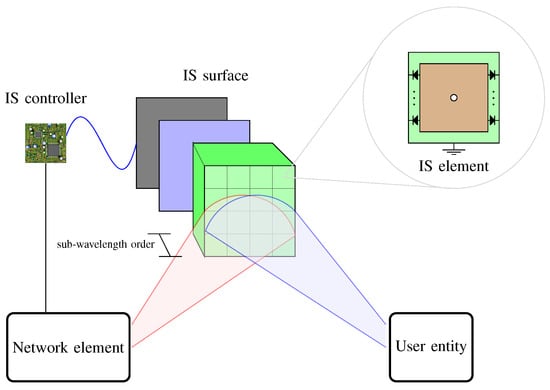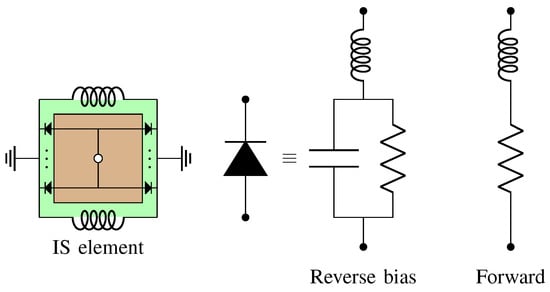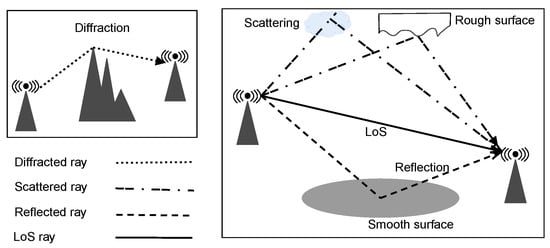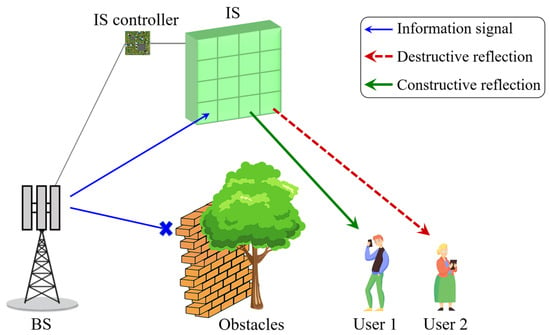
| Version | Summary | Created by | Modification | Content Size | Created at | Operation |
|---|---|---|---|---|---|---|
| 1 | Jefferson David Santos e Silva | -- | 4827 | 2023-12-29 13:21:50 | | | |
| 2 | Lindsay Dong | + 141 word(s) | 4968 | 2024-01-02 01:39:40 | | | | |
| 3 | Lindsay Dong | Meta information modification | 4968 | 2024-01-02 01:40:42 | | | | |
| 4 | Lindsay Dong | Meta information modification | 4968 | 2024-01-02 01:41:44 | | | | |
| 5 | Lindsay Dong | -4 word(s) | 4964 | 2024-01-02 01:43:47 | | | | |
| 6 | Lindsay Dong | -42 word(s) | 4922 | 2024-01-12 09:09:01 | | |
Video Upload Options
Terahertz (THz) band will play an important role in enabling sixth generation (6G) envisioned applications. Compared with lower frequency signals, THz waves are severely attenuated by the atmosphere temperature, pressure, and humidity. Thus, designing a THz communication system must take into account how to circumvent or diminish those issues to achieve a sufficient quality of service. Different solutions are being analyzed: intelligent communication environments, ubiquitous artificial intelligence, extensive network automation, and dynamic spectrum access, among others.
1. Introduction
2. IS in Wireless Communication
2.1. A Historical Perspective
2.2. IS Architecture

2.3. IS Operation

The combination of the N PIN diode states leads to distinct phase shifts for each IS element. Figure 3 illustrates a signal reaching an IS k-th element. As the signal arrives at the IS k-th element within a direction ξA(k)=(θA(k), ϕA(k)), the IS k-th element PIN diode states redirect the corresponding reflected or transmitted signal by a phase shift ψ(k), such that the departure direction is ξD(k)=(θD(k), ϕD(k)).

Figure 3. Angles of arrival and departure for a signal reaching the IS k-th element.
3. THz Channel Modeling
3.1. Deterministic Channel Model for THz Band

3.2. Modeling of Statistical Channels
4. IS-Aided THz Channels

| Reference | Performance Evaluation | System Model | Design Objective | Optimization Techniques |
|---|---|---|---|---|
| [68] | Path gain and capacity | D–band indoor downlink | Maximize signal reflection and restore LoS link between the transmitter and receiver blocked by obstacles | Antenna theory |
| [69] | Adaptively selecting step size | Indoor MIMO downlink | Spectral efficiency with phase shift adjust | Taylor expansion aided gradient descent |
| [67] | Path loss | THz systems downlink | Expression that determines the optimal phase shift | Electromagnetic theory |
| [70] | Path loss | MIMO | Power gain and energy efficiency | Beamforming |
| [71] | Beam pattern and quantization error | mMIMO | Channel estimation and transmission solutions with hybrid beamforming architectures | Geometric channel model and IAP-SP for CSI acquisition. |
| [72] | NMSE | Indoor MIMO systems | Channel estimation | Beam training |
| [73] | NMSE | MIMO | Channel estimation | IAP-SP scheme |
| [74] | SNR feedback | MISO downlink | Minimization transmit power while maximizing the system achievable rate | Beamforming optimization based on statistical CSI and genetic algorithms |
| [75] | Success rate and beamforming gain ratio | mmWave/THz downlink | Perfectly aligned transmitter-receiver channel | Efficient beam training with cascade channel |
| [76] | Secrecy rate | mmWave/THz systems | Optimal discrete phase shifts to maximize the secrecy rate | SDP-based method and the element-wise BCD method |
| [77] | Secrecy rate | MISO downlink | Secure operation with secrecy rate maximization | Active beamformer and passive reflecting phase shifters |
| [78] | Path loss | Not detailed | Intensity for the electric field reflected by RISs in the short and long transmission distance regimes | General scalar theory of diffraction and the Huygens-Fresnel principle |
| [79] | SNR | Not detailed | Improve the average receive SNR | Beamforming |
| [80] | SNR, SNDR, small-scale amplitude fading, OP, and ergodic capacity | THz system | Exact PDF and CDF expressions of end-to-end SNR and SNDR of the system | FTR distribution and multivariate Fox’s H-function |
| [81] | Path loss and beam pattern | THz systems | Beamfocusing | Beamforming with physical optics channel model |
| [82] | Beam pattern | THz massive MIMO systems (downlink and uplink) | Beamforming design and channel estimation performance | Beamforming with physical channel model |
| [53] | SNR, ergodic capacity and OP | THz indoor systems downlink | Receiver beam misalignment and restore the transmitter/receiver connection blocked by obstacles | Electromagnetic theory |
| [83] | UAV trajectory, phase shift, THz band allocation and power control | UAV systems downlink | To maintain reliable THz communication and minimize average rate of users | SCA |
| [84] | Energy-efficient, SNR, latency and success rate | 3-D indoor THz wireless communication | Minimizes latency using ray tracing techniques to find the best THz signal propagation path | Ray searching and beam-selecting |
| [85] | Achievable rate, phase compensation and normalized array gain | IS-aided THz system | Achievable rate maximization for distributed IS-assisted THz communications | Analog beamforming, digital beamforming vector |
| [86] | Phase shifts, ergodic net throughput, blocking probability | CF mMIMO | Channel estimation and unblock links | OP and fading spatial correlation with increased element numbers |
| [87] | Misalignment fading | THz inter-satellite links | Compensation for the high path loss associated with high carrier frequencies and to improve SNR | Antenna theory |
| [88] | Coverage area and sum rate | mmWave or THz indoor communication | Placement optimization to maximize the long-term sum rate and then optimization of transmit beamforming and reflecting procedure in real time | Antenna theory and deep learning |
| [89] | BER and modulation speed | Full-wave simulation | Eliminate on-chip signal attenuation and inter-symbol interference | Binary IS optimization algorithm |
References
- Akyildiz, I.F.; Kak, A.; Nie, S. 6G and beyond: The future of wireless communications systems. IEEE Access 2020, 8, 133995–134030.
- Wang, C.X.; Huang, J.; Wang, H.; Gao, X.; You, X.; Hao, Y. 6G Wireless Channel Measurements and Models: Trends and Challenges. IEEE Veh. Technol. Mag. 2020, 15, 22–32.
- Chen, Z.; Ma, X.; Han, C.; Wen, Q. Towards intelligent reflecting surface empowered 6G terahertz communications: A survey. China Commun. 2021, 18, 93–119.
- Rappaport, T.S.; Xing, Y.; Kanhere, O.; Ju, S.; Madanayake, A.; Mandal, S.; Alkhateeb, A.; Trichopoulos, G.C. Wireless Communications and Applications Above 100 GHz: Opportunities and Challenges for 6G and Beyond. IEEE Access 2019, 7, 78729–78757.
- Song, H.J.; Nagatsuma, T. Present and Future of Terahertz Communications. IEEE Trans. Terahertz Sci. Technol. 2011, 1, 256–263.
- Seeds, A.J.; Shams, H.; Fice, M.J.; Renaud, C.C. TeraHertz Photonics for Wireless Communications. J. Lightwave Technol. 2015, 33, 579–587.
- Akyildiz, I.F.; Jornet, J.M.; Han, C. TeraNets: Ultra-broadband communication networks in the terahertz band. IEEE Wireless Commun. 2014, 21, 130–135.
- He, Y.; Chen, Y.; Zhang, L.; Wong, S.W.; Chen, Z.N. An overview of terahertz antennas. China Commun. 2020, 17, 124–165.
- Siles, G.A.; Riera, J.M.; Garcia-del Pino, P. Atmospheric Attenuation in Wireless Communication Systems at Millimeter and THz Frequencies . IEEE Antennas Propagat. Mag. 2015, 57, 48–61.
- Yang, Y.; Mandehgar, M.; Grischkowsky, D.R. Understanding THz Pulse Propagation in the Atmosphere. IEEE Trans. THz Sci. Technol. 2012, 2, 406–415.
- Jansen, C.; Piesiewicz, R.; Mittleman, D.; Kurner, T.; Koch, M. The Impact of Reflections From Stratified Building Materials on the Wave Propagation in Future Indoor Terahertz Communication Systems. IEEE Trans. Antennas Propagat. 2008, 56, 1413–1419.
- Chen, Z.; Ma, X.; Zhang, B.; Zhang, Y.; Niu, Z.; Kuang, N.; Chen, W.; Li, L.; Li, S. A survey on terahertz communications. China Commun. 2019, 16, 1–35.
- Di Renzo, M.; Zappone, A.; Debbah, M.; Alouini, M.S.; Yuen, C.; de Rosny, J.; Tretyakov, S. Smart Radio Environments Empowered by Reconfigurable Intelligent Surfaces: How It Works, State of Research, and The Road Ahead. IEEE J. Select. Areas Commun. 2020, 38, 2450–2525.
- Wu, Q.; Zhang, R. Towards Smart and Reconfigurable Environment: Intelligent Reflecting Surface Aided Wireless Network. IEEE Commun. Mag. 2020, 58, 106–112.
- Wu, L.A.; LONG, G.L.; Gong, Q.; Guo, G.C. Optics in Ancient China. AAPPS Bulletin 2015, 25, 1–3.
- Smith, D.R.; Padilla, W.J.; Vier, D.; Nemat-Nasser, S.C.; Schultz, S. Composite medium with simultaneously negative permeability and permittivity. Physical Rev. Lett. 2000, 84, 4184.
- Shelby, R.A.; Smith, D.R.; Schultz, S. Experimental verification of a negative index of refraction. Science 2001, 292, 77–79.
- Edalati, A.; Denidni, T.A. High-Gain Reconfigurable Sectoral Antenna Using an Active Cylindrical FSS Structure. IEEE Trans. Antennas Propagat. 2011, 59, 2464–2472.
- Cui, T.J.; Qi, M.Q.; Wan, X.; Zhao, J.; Cheng, Q. Coding metamaterials, digital metamaterials and programmable metamaterials. Light. Sci. Appl. 2014, 3, e218.
- Hum, S.V.; Okoniewski, M.; Davies, R.J. Modeling and Design of Electronically Tunable Reflectarrays. IEEE Trans. Antennas Propagat. 2007, 55, 2200–2210.
- Tan, X.; Sun, Z.; Jornet, J.M.; Pados, D. Increasing indoor spectrum sharing capacity using smart reflect-array. In Proceedings of the 2016 IEEE International Conference on Communications (ICC), Kuala Lumpur, Malaysia, 22–27 May 2016; pp. 1–6.
- Yang, H.; Cao, X.; Yang, F.; Gao, J.; Xu, S.; Li, M.; Chen, X.; Zhao, Y.; Zheng, Y.; Li, S. A programmable metasurface with dynamic polarization, scattering and focusing control. Sci. Rep. 2016, 6, 35692.
- Hu, S.; Rusek, F.; Edfors, O. The Potential of Using Large Antenna Arrays on Intelligent Surfaces. In Proceedings of the 2017 IEEE 85th Vehicular Technology Conference (VTC Spring), Sydney, NSW, Australia, 4–7 June 2017; pp. 1–6.
- Hu, S.; Rusek, F.; Edfors, O. Beyond Massive MIMO: The Potential of Data Transmission with Large Intelligent Surfaces. IEEE Trans. Signal Processing 2018, 66, 2746–2758.
- Alegría, J.V.; Rusek, F. Achievable Rate with Correlated Hardware Impairments in Large Intelligent Surfaces. In Proceedings of the 2019 IEEE 8th International Workshop on Computational Advances in Multi-Sensor Adaptive Processing (CAMSAP), Le gosier, Guadeloupe, 15–18 December 2019; pp. 559–563.
- Liaskos, C.; Nie, S.; Tsioliaridou, A.; Pitsillides, A.; Ioannidis, S.; Akyildiz, I. Realizing Wireless Communication Through Software-Defined HyperSurface Environments. In Proceedings of the 2018 IEEE 19th International Symposium on “A World of Wireless, Mobile and Multimedia Networks” (WoWMoM), Chania, Greece, 12–15 June 2018; pp. 14–15.
- Huang, X.; Zhang, X.; Hu, Z.; Al-Aqeeli, M.; Alburaikan, A. Design of broadband and tunable terahertz absorbers based on graphene metasurface: Equivalent circuit model approach. Microw. Antennas Propag. IET 2015, 9, 307–312.
- Subrt, L.; Pechac, P. Controlling propagation environments using Intelligent Walls. In Proceedings of the 2012 6th European Conference on Antennas and Propagation (EUCAP), Prague, Czech Republic, 26–30 March 2012; pp. 1–5.
- Chang, K.; il Kwak, S.; Yoon, Y.J. Equivalent circuit modeling of active frequency selective surfaces. In Proceedings of the 2008 IEEE Radio and Wireless Symposium, Orlando, FL, USA, 2–24 January 2008; pp. 663–666.
- De Lima, C.; Belot, D.; Berkvens, R.; Bourdoux, A.; Dardari, D.; Guillaud, M.; Isomursu, M.; Lohan, E.S.; Miao, Y.; Barreto, A.N.; et al. Convergent communication, sensing and localization in 6G systems: An overview of technologies, opportunities and challenges. IEEE Access 2021, 9, 26902–26925.
- Huq, K.M.S.; Busari, S.A.; Rodriguez, J.; Frascolla, V.; Bazzi, W.; Sicker, D.C. Terahertz-Enabled Wireless System for Beyond-5G Ultra-Fast Networks: A Brief Survey. IEEE Netw. 2019, 33, 89–95.
- Rikkinen, K.; Kyosti, P.; Leinonen, M.E.; Berg, M.; Parssinen, A. THz Radio Communication: Link Budget Analysis toward 6G. IEEE Commun. Mag. 2020, 58, 22–27.
- Mulloni, V.; Donelli, M. Chipless RFID sensors for the Internet of Things: Challenges and opportunities. Sensors 2020, 20, 2135.
- Han, C.; Chen, Y. Propagation Modeling for Wireless Communications in the Terahertz Band. IEEE Commun. Mag. 2018, 56, 96–101.
- Han, C.; Bicen, A.O.; Akyildiz, I.F. Multi-Ray Channel Modeling and Wideband Characterization for Wireless Communications in the Terahertz Band. IEEE Trans. Wireless Commun. 2015, 14, 2402–2412.
- Kasai, Y.; Seta, T. Terahertz-Wave Propagation Model. J. Natl. Inst. Inf. Commun. Technol. Vol. 2008, 55, 73–77.
- Zhao, Y.; Hao, Y.; Parini, C. FDTD Characterization of UWB Indoor Radio Channel Including Frequency Dependent Antenna Directivities. IEEE Antennas Wireless Propagat. Lett. 2007, 6, 191–194.
- Chung, Y.S.; Cheon, C.; Son, J.H.; Hahn, S.Y. FDTD analysis of propagation characteristics of terahertz electromagnetic pulses. IEEE Trans. Magn. 2000, 36, 951–955.
- Piesiewicz, R.; Jansen, C.; Mittleman, D.; Kleine-Ostmann, T.; Koch, M.; Kurner, T. Scattering analysis for the modeling of THz communication systems. IEEE Trans. Antennas Propagat. 2007, 55, 3002–3009.
- Molisch, A. Ultrawideband propagation channels-theory, measurement, and modeling. IEEE Trans. Veh. Technol. 2005, 54, 1528–1545.
- Jornet, J.M.; Akyildiz, I.F. Channel Modeling and Capacity Analysis for Electromagnetic Wireless Nanonetworks in the Terahertz Band. IEEE Trans. Wireless Commun. 2011, 10, 3211–3221.
- Priebe, S.; Kannicht, M.; Jacob, M.; Kürner, T. Ultra broadband indoor channel measurements and calibrated ray tracing propagation modeling at THz frequencies. J. Commun. Netw. 2013, 15, 547–558.
- Jakes, W.C.; Cox, D.C. Microwave Mobile Communications; Wiley-IEEE Press: Hoboken, NJ, USA, 1994.
- Nakagami, M. The m-distribution—A General Formula Of Intensity Distribution of rapid fading. In Statistical Methods In Radio Wave Propagation; Elsevier: Amsterdam, The Netherlands, 1960; pp. 3–36.
- Rice, S. Probability distributions for noise plus several sine waves-The problem of computation. IEEE Trans. Commun. 1974, 22, 851–853.
- Priebe, S.; Kurner, T. Stochastic Modeling of THz Indoor Radio Channels. IEEE Trans. Wireless Commun. 2013, 12, 4445–4455.
- Tasolamprou, A.C.; Pitilakis, A.; Abadal, S.; Tsilipakos, O.; Timoneda, X.; Taghvaee, H.; Sajjad Mirmoosa, M.; Liu, F.; Liaskos, C.; Tsioliaridou, A.; et al. Exploration of Intercell Wireless Millimeter-Wave Communication in the Landscape of Intelligent Metasurfaces. IEEE Access 2019, 7, 122931–122948.
- Kim, S.; Zajić, A. Characterization of 300-GHz Wireless Channel on a Computer Motherboard. IEEE Trans. Antennas Propagat. 2016, 64, 5411–5423.
- Khademi, S.; Chepuri, S.P.; Irahhauten, Z.; Janssen, G.J.; van der Veen, A.J. Channel Measurements and Modeling for a 60 GHz Wireless Link within a Metal Cabinet. IEEE Trans. Wireless Commun. 2015, 14, 5098–5110.
- Akyildiz, I.F.; Han, C.; Nie, S. Combating the Distance Problem in the Millimeter Wave and Terahertz Frequency Bands. IEEE Commun. Mag. 2018, 56, 102–108.
- Liu, Y.; Liu, X.; Mu, X.; Hou, T.; Xu, J.; Di Renzo, M.; Al-Dhahir, N. Reconfigurable intelligent surfaces: Principles and opportunities. IEEE Commun. Surveys Tuts. 2021, 23, 1546–1577.
- Basar, E.; Di Renzo, M.; De Rosny, J.; Debbah, M.; Alouini, M.S.; Zhang, R. Wireless Communications Through Reconfigurable Intelligent Surfaces. IEEE Access 2019, 7, 116753–116773.
- Papasotiriou, E.N.; Boulogeorgos, A.A.A.; Alexiou, A. On the Impact of Beam Misalignment in Reconfigurable Intelligent Surface Assisted THz Systems. In Proceedings of the 2021 IEEE 22nd International Workshop on Signal Processing Advances in Wireless Communications (SPAWC), Lucca, Italy, 12 November 2021; pp. 121–125.
- Boulogeorgos, A.A.A.; Alexiou, A. Coverage analysis of reconfigurable intelligent surface assisted THz wireless systems. IEEE Open J. Veh. Technol. 2021, 2, 94–110.
- Achouri, K.; Khan, B.A.; Gupta, S.; Lavigne, G.; Salem, M.A.; Caloz, C. Synthesis of Electromagnetic Metasurfaces: Principles and Illustrations. arXiv 2015, arXiv:1510.05997.
- Joonas, K.; Janne, L.; Markku, J. A line-of-sight channel model for the 100–450 gigahertz frequency band. EURASIP J. Wirel. Commun. Netw. 2021, 2021, 1–15.
- Huang, C.; Zappone, A.; Alexandropoulos, G.C.; Debbah, M.; Yuen, C. Reconfigurable Intelligent Surfaces for Energy Efficiency in Wireless Communication. IEEE Trans. Wireless Commun. 2019, 18, 4157–4170.
- Boulogeorgos, A.A.A.; Alexiou, A. On the Ergodic Secrecy Capacity of Reconfigurable Intelligent Surface Aided Wireless Systems Under Mixture Gamma Fading. In Proceedings of the 2023 IEEE Wireless Communications and Networking Conference (WCNC), Glasgow, UK, 26–29 March 2023; pp. 1–6.
- Boulogeorgos, A.A.A.; Alexiou, A. Performance analysis of reconfigurable intelligent surface-assisted wireless systems and comparison with relaying. IEEE Access 2020, 8, 94463–94483.
- Van Chien, T.; Papazafeiropoulos, A.K.; Tu, L.T.; Chopra, R.; Chatzinotas, S.; Ottersten, B. Outage probability analysis of IRS-assisted systems under spatially correlated channels. IEEE Wireless Commun. Lett. 2021, 10, 1815–1819.
- Li, S.; Yan, S.; Bariah, L.; Muhaidat, S.; Wang, A. IRS-Assisted Full Duplex Systems Over Rician and Nakagami Fading Channels. IEEE Open J. Veh. Technol. 2023, 4, 217–229.
- Bao, T.; Wang, H.; Yang, H.C.; Wang, W.J.; Hasna, M.O. Performance analysis of RIS-aided communication systems over the sum of cascaded Rician fading with imperfect CSI. In Proceedings of the 2022 IEEE Wireless Communications and Networking Conference (WCNC), Austin, TX, USA, 10–13 April 2022; pp. 399–404.
- Ni, Y.; Zhao, H.; Liu, Y.; Wang, J.; Gui, G.; Zhang, H. Analysis of RIS-Aided Communications Over Nakagami-m Fading Channels. IEEE Trans. Veh. Technol. 2023, 72, 8709–8721.
- Nguyen, B.C.; Hoang, T.M.; Van Vinh, N.; Luu, G.T. On performance of multi-RIS assisted multi-user nonorthogonal multiple access system over Nakagami-m fading channels. Computer Commun. 2023, 197, 294–305.
- Ibrahim, H.; Tabassum, H.; Nguyen, U.T. Exact coverage analysis of intelligent reflecting surfaces with Nakagami-m channels. IEEE Trans. Veh. Technol. 2021, 70, 1072–1076.
- Al-Rimawi, A.; Al-Dweik, A. On the Performance of RIS-Assisted Communications with Direct Link Over κ-μ Shadowed Fading. IEEE Open J. Commun. Soc. 2022, 3, 2314–2328.
- Boulogeorgos, A.A.A.; Alexiou, A. Pathloss modeling of reconfigurable intelligent surface assisted THz wireless systems. In Proceedings of the ICC 2021—IEEE International Conference on Communications, Montreal, QC, Canada, 14–23 June 2021; pp. 1–6.
- Papasotiriou, E.N.; Boulogeorgos, A.A.A.; Stratakou, A.; Alexiou, A. Performance evaluation of reconfigurable intelligent surface assisted D-band wireless communication. In Proceedings of the 2020 IEEE 3rd 5G World Forum (5GWF), Bangalore, India, 10–12 September 2020; pp. 360–365.
- Chen, Z.; Chen, W.; Ma, X.; Li, Z.; Chi, Y.; Han, C. Taylor Expansion Aided Gradient Descent Schemes for IRS-Enabled Terahertz MIMO Systems. In Proceedings of the 2020 IEEE Wireless Communications and Networking Conference Workshops (WCNCW), Seoul, Republic of Korea, 25 June 2020; pp. 1–7.
- Dovelos, K.; Assimonis, S.D.; Quoc Ngo, H.; Bellalta, B.; Matthaiou, M. Intelligent Reflecting Surfaces at Terahertz Bands: Channel Modeling and Analysis. In Proceedings of the 2021 IEEE International Conference on Communications Workshops (ICC Workshops), Montreal, QC, Canada, 9 July 2021; pp. 1–6.
- Ning, B.; Chen, Z.; Chen, W.; Du, Y. Channel Estimation And Transmission For Intelligent Reflecting Surface Assisted THz Communications. In Proceedings of the ICC 2020–2020 IEEE International Conference on Communications (ICC), Dublin, Ireland, 7–11 June 2020; pp. 1–7.
- Ma, X.; Chen, Z.; Chi, Y.; Chen, W.; Du, L.; Li, Z. Channel Estimation for Intelligent Reflecting Surface Enabled Terahertz MIMO Systems. In Proceedings of the 2020 IEEE International Conference on Communications Workshops (ICC Workshops), Dublin, Ireland, 21 July 2020; pp. 1–6.
- Ma, X.; Chen, Z.; Chen, W.; Li, Z.; Chi, Y.; Han, C.; Li, S. Joint Channel Estimation and Data Rate Maximization for Intelligent Reflecting Surface Assisted Terahertz MIMO Communication Systems. IEEE Access 2020, 8, 99565–99581.
- Souto, V.D.P.; Souza, R.D.; Uchôa-Filho, B.F.; Li, Y. Intelligent Reflecting Surfaces Beamforming Optimization with Statistical Channel Knowledge. Sensors 2022, 22, 2390.
- Wang, P.; Fang, J.; Zhang, W.; Li, H. Fast Beam Training and Alignment for IRS-Assisted Millimeter Wave/Terahertz Systems. IEEE Trans. Wireless Commun. 2021.
- Qiao, J.; Alouini, M.S. Secure Transmission for Intelligent Reflecting Surface-Assisted mmWave and Terahertz Systems. IEEE Wireless Commun. Lett. 2020, 9, 1743–1747.
- Ning, B.; Chen, Z.; Chen, W.; Li, L. Improving Security of THz Communication with Intelligent Reflecting Surface. In Proceedings of the 2019 IEEE Globecom Workshops (GC Wkshps), Waikoloa, HI, USA, 9–13 December 2019; pp. 1–6.
- Özdogan, Ö.; Björnson, E.; Larsson, E.G. Intelligent reflecting surfaces: Physics, propagation, and pathloss modeling. IEEE Wireless Commun. Lett. 2019, 9, 581–585.
- Yan, W.; Yuan, X.; Kuai, X. Passive beamforming and information transfer via large intelligent surface. IEEE Wireless Commun. Lett. 2019, 9, 533–537.
- Du, H.; Zhang, J.; Guan, K.; Niyato, D.; Jiao, H.; Wang, Z.; Kürner, T. Performance and Optimization of Reconfigurable Intelligent Surface Aided THz Communications. IEEE Trans. Commun. 2022, 70, 3575–3593.
- Dovelos, K.; Assimonis, S.D.; Ngo, H.Q.; Bellalta, B.; Matthaiou, M. Electromagnetic Modeling of Holographic Intelligent Reflecting Surfaces at Terahertz Bands. In Proceedings of the 2021 55th Asilomar Conference on Signals, Systems, and Computers, Pacific Grove, CA, USA, 31 October–3 November 2021; pp. 415–420.
- Wan, Z.; Gao, Z.; Gao, F.; Di Renzo, M.; Alouini, M.S. Terahertz massive MIMO with holographic reconfigurable intelligent surfaces. IEEE Trans. Commun. 2021, 69, 4732–4750.
- Pan, Y.; Wang, K.; Pan, C.; Zhu, H.; Wang, J. UAV-assisted and intelligent reflecting surfaces-supported terahertz communications. IEEE Wireless Commun. Lett. 2021, 10, 1256–1260.
- Huo, Y.; Dong, X.; Ferdinand, N. Distributed Reconfigurable Intelligent Surfaces for Energy-Efficient Indoor Terahertz Wireless Communications. IEEE Internet Things J. 2023, 10, 2728–2742.
- Sun, G.; Yan, W.; Hao, W.; Huang, C.; Yuen, C. Beamforming Design for the Distributed RISs-Aided THz Communications with Double-Layer True Time Delays. IEEE Trans. Veh. Technol. 2023, 1–15.
- Van Chien, T.; Ngo, H.Q.; Chatzinotas, S.; Di Renzo, M.; Ottersten, B. RIS and cell-free massive MIMO: A marriage for harsh propagation environments. In Proceedings of the 2021 IEEE Global Communications Conference (GLOBECOM), Madrid, Spain, 7–11 December 2021; pp. 1–6.
- Tekbiyik, K.; Kurt, G.K.; Ektı, A.R.; Yanikomeroglu, H. Reconfigurable Intelligent Surfaces Empowered THz Communication in LEO Satellite Networks. IEEE Access 2022, 10, 121957–121969.
- Saqib, N.U.; Hou, S.; Chae, S.H.; Jeon, S.W. Reconfigurable Intelligent Surface Aided Hybrid Beamforming: Optimal Placement and Beamforming Design. arXiv 2023, arXiv:2303.11763.
- Imani, M.F.; Abadal, S.; del Hougne, P. Metasurface-Programmable Wireless Network-On-Chip. Adv. Sci. 2022, 9, 2201458.




